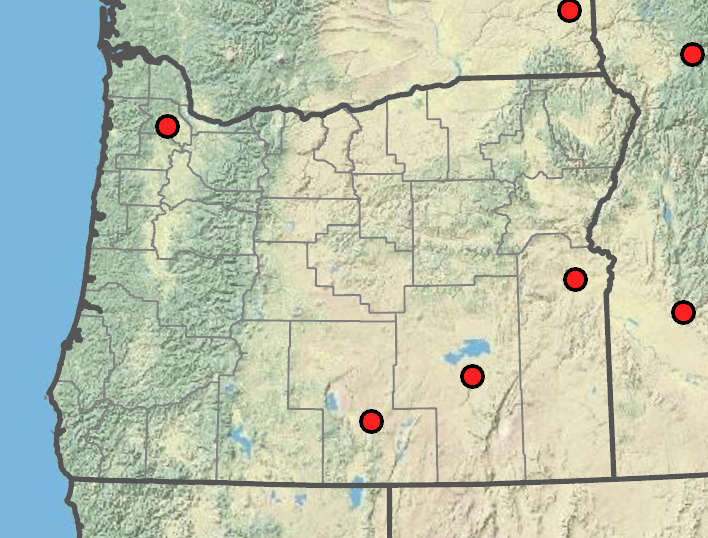Eleocharis erythropoda
Eleocharis bernardina
bald spikerush
terete, 8–80 cm × 0.3–1.4 mm.
ovoid to lanceoloid or nearly cylindric, 3–18 × 2–3(4) mm;
proximal scale clasping all or nearly all of culm, subproximal scale with flower; floral scales 15–50, 4–5 per mm of rachilla, 2–3.5 × 1.5–1.7 mm; in proximal part of spike apex rounded; in distal part apex entire; acute.
perianth bristles 4 or absent, usually equal, equaling achene to slightly exceeding tubercle;
anthers 1–1.8 mm;
stigmas 2.
biconvex, 0.9–1.6 × 0.7–1.2 mm
persistent;
apex broadly obtuse to subacute; tooth sometimes present; to 0.1 mm.
pyramidal; much higher than wide to lower than wide, 0.35–0.65 × 0.2–0.6 mm.
=16, 18, 19, 20.
Eleocharis erythropoda
Eleocharis bernardina
Marshes, wet meadows, fens, disturbed wetlands. 500–1500 m. BR, Owy. ID, WA; north to AK, east to New Brunswick and NC, southeast to AZ and MS. Native.
Eleocharis erythropoda is the most delicate member of the E. palustris complex. Its proximal scales consistently clasp the entire culm, and its subproximal scales consistently subtend flowers. Intermediates between E. erythropoda and E. macrostachya may be more common in Oregon than pure E. erythropoda.
Barbara Wilson, Richard Brainerd, Nick Otting
- Local floras:
BC,
OR,
WA
- Local Web sites:
Flora NW,
PNW Herbaria
WildflowerSearch
iNaturalist (observations)
USDA Plants Database
- LBJ Wildflower Center
- SEINet
- Plants of the World Online
- Encyclopedia of Life
- Wikipedia
- Google Image Search


